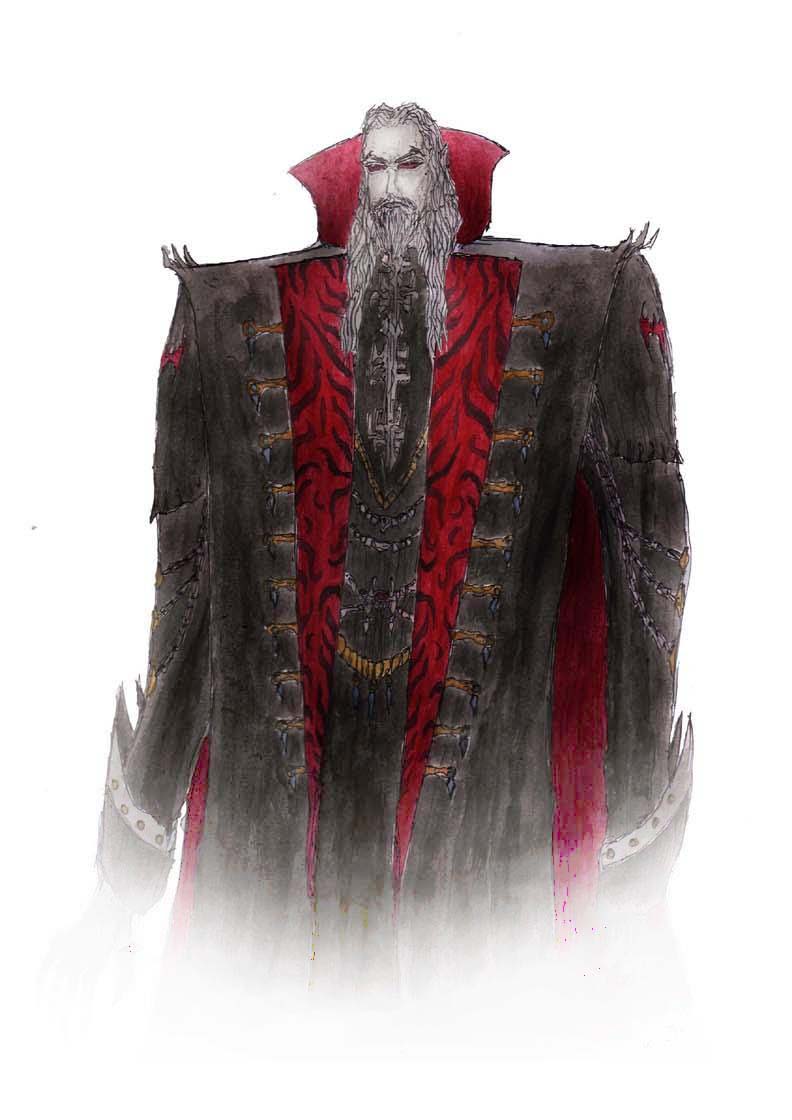Dracula (Vlad III)
Dracula (Vlad III)
Dracula (Vlad III) by Clolias

Description
Description
Vlad III Dracula (November or December, 1431¡ªDecember 1476, has also been known as Dracula (also Drăculea ¡ª see below, or Vlad the Impaler (Vlad Ţepeş IPA: /'tsepeʃ/ in Romanian). Vlad III was the voivode, or prince, of the principality of Wallachia (what is today an informal region in southern Romania). His three reigns were in 1448, from 1456 to 1462, and 1476.<br />
<br />
As voivode he led an independent policy in relation to the Ottoman Empire, and in Romania at least he is best remembered as a Christian knight crusading against Islamic expansionism into Europe. He is known in Turkish as Kazıklı Bey, or the Impaler Prince, and is a popular folk hero in Romania and Moldova even today.<br />
<br />
Outside of Romania he is known by the exaggerated tales of atrocities (many of which stem from records of debatable authenticity), and even more so - the title of vampire and as the main character of Bram Stoker's 1897 horror novel, Dracula ¡ª to the point where he is thought to be the inspiration for it. It has been suggested that this connection stemmed from a certain grotesque eating habit of Vlad's: rumour has it he would consume bread dipped in his victims' blood and he refused to eat anywhere but his garden where he had his enemies impaled on 6 foot stakes that were driven into the ground.<br />
<br />
His impact on Ottoman Empire expansion is recognizable in that his successful war against the Ottomans bought precious time for western Europe.<br />
<br />
His post-mortem moniker of Ţepeş (Impaler) originated in his preferred method for executing his opponents, impalement, popularized by medieval Transylvanian pamphlets.
<br />
As voivode he led an independent policy in relation to the Ottoman Empire, and in Romania at least he is best remembered as a Christian knight crusading against Islamic expansionism into Europe. He is known in Turkish as Kazıklı Bey, or the Impaler Prince, and is a popular folk hero in Romania and Moldova even today.<br />
<br />
Outside of Romania he is known by the exaggerated tales of atrocities (many of which stem from records of debatable authenticity), and even more so - the title of vampire and as the main character of Bram Stoker's 1897 horror novel, Dracula ¡ª to the point where he is thought to be the inspiration for it. It has been suggested that this connection stemmed from a certain grotesque eating habit of Vlad's: rumour has it he would consume bread dipped in his victims' blood and he refused to eat anywhere but his garden where he had his enemies impaled on 6 foot stakes that were driven into the ground.<br />
<br />
His impact on Ottoman Empire expansion is recognizable in that his successful war against the Ottomans bought precious time for western Europe.<br />
<br />
His post-mortem moniker of Ţepeş (Impaler) originated in his preferred method for executing his opponents, impalement, popularized by medieval Transylvanian pamphlets.
General Info
General Info
Ratings
Category Games » - by Genre » - Action games » Castlevania series
Date Submitted
Views 1230
Favorites... 0
Vote Score 0
Category Games » - by Genre » - Action games » Castlevania series
Date Submitted
Views 1230
Favorites... 0
Vote Score 0
Comments
4
Media Unspecified
Time Taken
Reference
Media Unspecified
Time Taken
Reference
Comments
You are not authorized to comment here. Your must be registered and logged in to comment
arsalanpp on January 7, 2025, 10:18:51 PM
arsalanpp on
shinnokarasu on August 13, 2007, 11:33:23 PM
shinnokarasu on
Nice drawing....but he doesn't actually look like that.........
nina94 on May 22, 2008, 3:02:21 PM
nina94 on
There are claims that thousands of people were impaled at a single time. One such claim says 10,000 were impaled in the Transylvanian city of Sibiu (where Vlad the Impaler had once lived) in 1460. Another allegation asserts that during the previous year, on Saint Bartholomew's Day (in August), Vlad the Impaler had 30,000 of the merchants and officials of the Transylvanian city of Bra?ov that were breaking his authority impaled. One of the most famous woodcuts of the period shows Vlad the Impaler feasting amongst a forest of stakes and their grisly burdens outside Bra?ov, while a nearby executioner cuts apart other victims. Impalement was Vlad's favourite method of torture but was by no means his only one. The list of tortures he is alleged to have employed is extensive: nails in heads, cutting off of limbs, blinding, strangulation, burning, cutting off of noses and ears, mutilation of sexual organs (especially in the case of women), scalping, skinning, exposure to the elements or to animals, and boiling alive. An old Romanian story says that Vlad left a gold cup in the middle of the street, then returned to pick it up the next day since no one touched it, as people were so afraid to commit crimes during his reign due to these horrific means of torture and capital punishment. No one was immune to Vlad the Impaler's attentions. His victims included women and children, peasants and great lords, ambassadors from foreign powers and merchants. Nevertheless, the vast majority of his European victims came from the merchants and boyars of Transylvania and his own country, Wallachia. Many have attempted to justify Vlad's actions on the basis of nascent nationalism and political necessity.
I know long info. But all of this is what I copied and pasted from a website. But it awsome that you were from Romania. I made a story called VAN HELSING 2 DRACULA RETURNS (from the other ovie VAN HELSING). And sorry for what I said, too. … Dang this is long info. -_-"
Clolias on August 31, 2007, 9:49:01 PM
Clolias on
